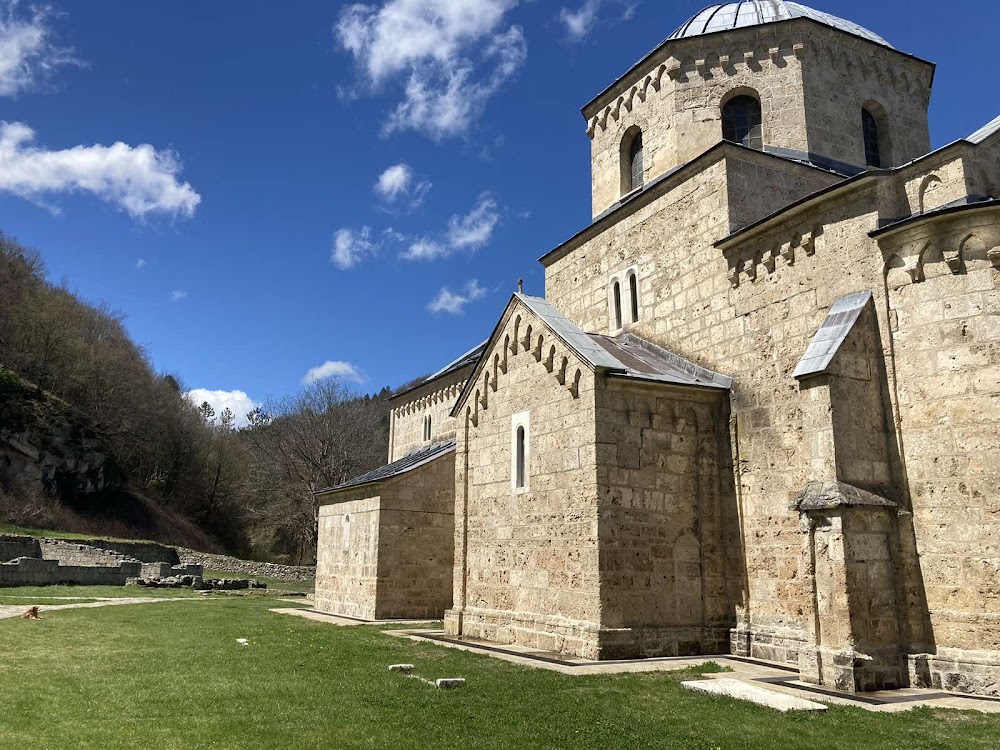Gradac Monastery (Манастир Градац)
Overview
Discovering Gradac Monastery
Nestled in the picturesque Raška District of Serbia, Gradac Monastery is a stunning example of medieval Serbian architecture. Built in the late 13th century during the reign of King Stefan Dragutin, this spiritual retreat was established by Queen Helen of Anjou, his devoted wife. Renowned for her piety and cultural contributions, Queen Helen dedicated the monastery to the Holy Virgin, making it an important site for both worship and reflection.
Architectural Marvel
Construction of Gradac Monastery began around 1277 and was completed by 1282. The architectural style of the monastery is a harmonious blend of Serbian-Byzantine and Gothic influences, reflecting the cultural connections between Serbia and Western Europe during that era. The heart of the complex is the Church of the Holy Theotokos, also known as the Church of the Holy Virgin, which showcases the exceptional craftsmanship of its builders.
Craftsmanship and Materials
Local artisans used stone and wood sourced from the surrounding landscape, with skilled masons from different regions contributing to the construction. The church's walls are composed of finely cut stone blocks, while its elegant bell tower stands out as a striking feature of medieval architecture, a testament to the skill of its creators.
Artistic Treasures
Inside the church, visitors will find breathtaking frescoes, which are remarkable examples of medieval Serbian art. These vibrant paintings depict various Gospel scenes, as well as portraits of saints and benefactors, including the founder, Queen Helen. Although the identities of the talented artists who created these masterpieces have largely been lost to time, their remarkable skill in color and detail continues to captivate onlookers.
Resilience Through Adversity
Over the centuries, Gradac Monastery faced periods of neglect and turmoil, particularly during the Ottoman occupation of Serbia. Abandoned in the 17th century, the monastery fell into disrepair for many years. Yet, its spiritual significance ensured that it was never entirely forgotten, as generations continued to hold it dear.
Restoration Efforts
In the 20th century, dedicated historians and conservators embarked on extensive restoration efforts to preserve this vital cultural and religious site. Their meticulous work involved detailed research and careful reconstruction using traditional methods and materials, with a particular focus on safeguarding the original frescoes and architectural features.
A Living Heritage
Today, Gradac Monastery is not only an active place of worship but also a cultural monument protected by the Serbian government. It draws visitors from around the globe who come to admire its historic splendor and serene surroundings. The monastery’s tranquil environment serves as an ideal backdrop for contemplation and spiritual reflection.
Significance and Legacy
Gradac Monastery holds immense significance, both in terms of its architectural and artistic value and its pivotal role in Serbian history. It stands as a testament to the cultural achievements of medieval Serbia and the enduring legacy of Queen Helen of Anjou's devotion.
As a vital part of the Serbian Orthodox Church, Gradac Monastery continues to inspire visitors with its silent tales of faith, resilience, and artistic brilliance, all set against the enchanting landscape of the Raška District. Whether you're seeking spiritual solace or a deeper understanding of Serbia's rich cultural heritage, this extraordinary site is sure to leave a lasting impression.






